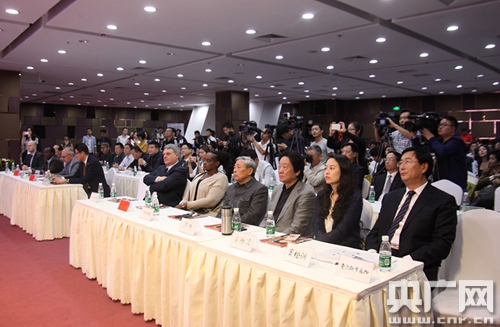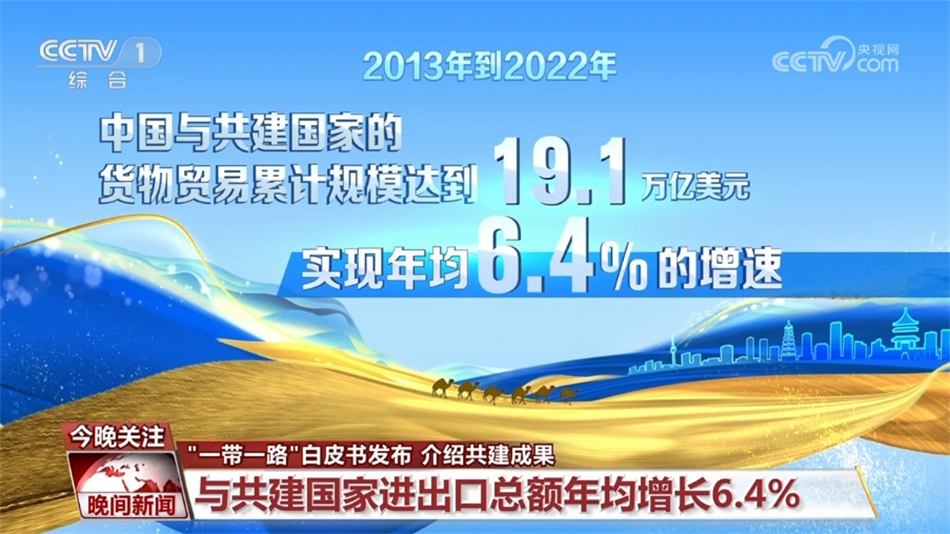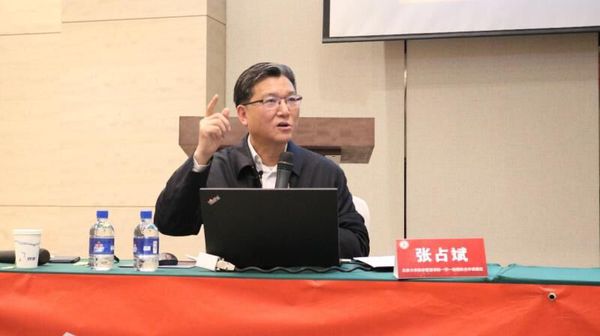Zhonghaida: Navigate Low-altitude Aircraft With The Light Of "Beidou"
Zhonghaida: Navigate Low-altitude Aircraft With The Light Of "Beidou"
Wang Hanhui, reporter of "China Business" magazine Source: China Business Times Word Count: 3629 If the low-altitude economy is a developing blueprint, then precise positioning technology is the basic coordinate system on this blueprint.
"China Business" magazine reporter Wang Hanhui Source: China Business Times Word Count: 3629
If the low-altitude economy is a developing blueprint, then precise positioning technology is the basic coordinate system on this blueprint. For Guangzhou Zhonghaida Satellite Navigation Technology Co., Ltd. (hereinafter referred to as "Zhonghaida"), precise positioning is not only its core business, but also a key entrance for its entry into the low-altitude economy.
In the vast blue ocean of low-altitude economy, China Overseas Da is quietly planning for the future with its precise core technological advantages. As the first listed company in the field of Beidou high-precision equipment manufacturing in China, Zhonghaida is transforming its deep technical strength accumulated in the field of satellite navigation into a key support for low-altitude economic development.
Technology accumulation and strategic evolution
In 1999, Liao Dinghai founded Zhonghaida, determined to use China's own technology to solve the problem of high-precision positioning. In 2011, Zhonghaida was listed on the Shenzhen GEM, becoming the first listed company in the field of Beidou precise positioning equipment manufacturing (stock code:). Today, this company, born at the turn of the century, has developed into a technology group with 16 first-tier subsidiaries, 26 branches, and more than 2,000 employees. Its product sales network covers more than 100 countries around the world and has more than 700 global partners.
In the domestic market, Zhonghaida has a more prominent influence. Data shows that its products have a market share of more than 30% in the domestic market, especially in the field of high-precision RTK receivers. This market advantage is not accidental, behind it is Zhonghaida's continuous technological accumulation and strategic evolution. The company has gradually transformed from a simple satellite navigation equipment manufacturer to a "spatial-time information solution provider", and is committed to achieving a comprehensive and high-precision positioning industrial layout of "sea, land, space, indoor and outdoor".
Zhonghaida's technical strategy is quite forward-looking. It not only deeply cultivates the Beidou satellite navigation system, but also integrates a variety of technologies such as sonar, photoelectric, inertial navigation, lidar, UWB ultra-broadband, and satellite-based enhancement. This idea of multi-technology integration allows Zhonghaida to provide more comprehensive and accurate positioning solutions, and also lays a technical foundation for its entry into the low-altitude economy field.
Zhonghaida has a strong sense of family and country. From assisting in the measurement of Mount Everest elevation throughout the process, to working with the United Nations Development Program to help countries along the "Belt and Road" to reduce disasters in science and technology; from supporting China's four polar scientific research experiments to continuing to invest in the development of education, China Overseas has interpreted the social responsibility of science and technology enterprises with practical actions. This sense of responsibility is not only an important part of Zhonghaida's corporate culture, but also its spiritual driving force for continuous innovation in the low-altitude economy.
Accurately position the "foundation" of low-altitude
Zhonghaida's precise positioning technology is mainly based on the Beidou satellite navigation system. Over the years, the company has been committed to taking the accuracy of satellite navigation signals to a whole new level. At present, Zhonghaida's positioning technology has reached centimeter-level accuracy and is moving towards subcentimeter-level or even millimeter-level. Especially in the field of indoor positioning, Zhonghaida is breaking through the limitations of traditional technologies and striving to achieve more accurate and reliable indoor positioning capabilities.
This high-precision positioning technology is of great significance to the low-altitude economy. Low-altitude aircraft, whether drones or urban air transportation, need to accurately understand their own location in order to complete flight missions safely and efficiently. As Li Jiawen, director of the CEO of China Overseas Dada, said: "Low-altitude aircraft and drones need to be positioned accurately to know where they are and where they go. Between these two points, we are more good at."
In the field of low-altitude economy, Zhonghaida's technical advantages are mainly reflected in two aspects: one is the surveying and mapping equipment installed on drones, and the other is the precise navigation and positioning services provided for low-altitude aircraft. The former enables drones to complete surveying and mapping tasks efficiently, while the latter ensures that low-altitude aircraft can accurately grasp their own position and perform flight operations safely.
It is worth mentioning that Zhonghaida's positioning technology is not only suitable for open spaces, but also optimized for complex urban environments. With the development of the low-altitude economy, low-altitude aircraft will increasingly shuttle through cities, facing complex situations such as building shading and signal interference. Zhonghaida is working hard to improve its technical capabilities to ensure that it can still provide stable and reliable positioning services in such complex environments.
In fact, Zhonghaida's precise positioning technology has much more significance to low-altitude economy than this. In the field of urban air logistics, accurate positioning can help drones accurately deliver packages; in emergency rescue scenarios, accurate positioning can guide rescue drones to quickly find the location of the accident; in urban planning and management, accurate positioning can assist drones in generating high-precision three-dimensional models. These application scenarios are inseparable from the support of high-precision positioning technology.
As the country promotes the "Beidou Substitution" strategy, Zhonghaida is expected to gain new development opportunities from it. The company is actively striving to include it in the third batch of "Beidou Substitution" project catalog, which will open up a broader market space for its technological application in the low-altitude economy field.
Zhonghaida has also invested significantly in precise positioning technology. The company's R&D expenses account for 16.5% of its revenue, far higher than the industry average. This continuous R&D investment ensures Zhonghaida's leading position in the field of high-precision positioning technology and provides a solid technical foundation for its participation in low-altitude economic construction.
It cannot be ignored that Zhonghaida's technological innovation is not a closed-door business, but is closely integrated with market demand. The company has established cooperation with companies such as Xiaopeng Motors to provide positioning chips for Xiaopeng Motors. This cooperation model is expected to expand to the field of low-altitude aircraft in the future, providing precise navigation technical support for low-altitude equipment such as drones and logistics distributors.
Transformation and breakthroughs in low-altitude fields
In the field of commercial aviation, success often comes from the precise positioning of strategies and the effective allocation of resources. Zhonghaida's development history in the low-altitude economy is a vivid reflection of this business wisdom.
A few years ago, Zhonghaida established a company in Tianjin, specializing in the research, development and manufacturing of drones. However, facing the powerful competitor represented by DJI, China Overseas has made a decision that seems to be regressing but is actually moving forward - to reduce the drone hardware business and focus on its most advantageous precise positioning technology.
This strategic adjustment reflects Zhonghaida's clear understanding of the market environment and its own advantages. In the field of drone hardware, DJI has established an unshakable leading edge, and it is difficult for new entrants to catch up in the short term. In contrast, Zhonghaida has accumulated many years of experience in precise positioning technology and has obvious technical advantages and market position. Therefore, it is a wiser choice to concentrate resources on core technology fields.
After the strategic adjustment, Zhonghaida did not give up the vast market of low-altitude economy, but participated in it in a new attitude. The company uses precise positioning technology as the entry point to provide critical navigation support for low-altitude aircraft. This model not only avoids head-on competition with leading companies such as DJI, but also allows us to give full play to China Overseas Technology's advantages and achieve differentiated competition.
From the perspective of the industrial chain, China Overseas Da’s strategic positioning is clearer - becoming the "bottom supporter" of the low-altitude economy. The company no longer pursues becoming an end-to-end solution provider, but focuses on the key link of providing high-precision positioning technology. This positioning not only conforms to Zhonghaida's technical genes, but also maximizes its value creation in low-altitude economy.
Zhonghaida's strategic adjustment is not a simple business contraction, but a strategic upgrade - the company is transforming from a hardware manufacturer to a solution provider, extending from providing a single product to providing comprehensive services. This transformation can not only improve the company's profitability and risk resistance, but also better meet the diversified needs of low-altitude economic development.
From a broader industry perspective, Zhonghaida's strategic adjustment also reflects the changes that low-altitude economic industries are undergoing - from single technology competition to ecological system coordination, from independent development to open cooperation. In this change, companies need to position their roles more accurately and clarify their own advantages in order to be invincible in the fierce market competition.
Zhonghaida's transformation practice provides useful reference for other companies that want to participate in the low-altitude economy: focusing on core technologies, finding the right market positioning, and forming complementary rather than direct competition with industry-leading companies is the key to achieving sustainable development in emerging industries.
Moving towards higher and farther goals
Standing at the time point of 2025, the integrated development of China Overseas and low-altitude economy is facing unprecedented opportunities and challenges. Multiple factors such as national strategic orientation, technological innovation breakthroughs, and market demand release are intertwined to outline a future full of possibilities.
The most direct opportunity comes from the policy level. The low-altitude economy has risen to a national strategy, and Guangdong Province has also listed it as a key development direction. With the gradual implementation of relevant policies and the continuous improvement of the system, the low-altitude economy is expected to usher in a period of rapid development. As a leading company in Beidou navigation field, Zhonghaida is expected to benefit from this policy dividend. Especially in the process of promoting the "Beidou Substitution" strategy, Zhonghaida is expected to gain more market opportunities with its technical accumulation and market experience in the application of Beidou system.
Technological innovation has brought broad development space to Zhonghaida. With the rapid development of new generation information technologies such as artificial intelligence, big data, and cloud computing, precise positioning technology is undergoing profound changes. Evolving from single positioning to fusion positioning, improving from centimeter-level accuracy to millimeter-level accuracy, and expanding from outdoor positioning to seamless connection between indoor and outdoor. These technological trends have created new development opportunities for Zhonghaida. Especially in the field of indoor positioning, traditional satellite navigation technology faces severe challenges due to factors such as signal attenuation and multipath effect, which is an excellent opportunity for Zhonghaida to overtake with technological innovation.
The release of market demand is also worth looking forward to. With the development of the low-altitude economy, low-altitude aircraft such as drones and air taxis will become increasingly popular, and the demand for precise positioning technology will also grow rapidly. It is predicted that by 2030, China's low-altitude economic market size is expected to exceed one trillion yuan, of which the precise positioning of related markets will occupy an important share. This huge market space provides a solid foundation for the sustainable development of Zhonghaida.
Looking ahead, Zhonghaida hopes to become a "navigator" of low-altitude economic development, and uses its precise positioning technology to provide reliable guarantees for low-altitude aircraft, and help low-altitude economic development safely, efficiently and sustainable. In this journey, Zhonghaida will continue to uphold the corporate mission of "making everything more accurate and the earth more intelligent", and use the light of technology to illuminate the future of the low-altitude economy.
By deepening the cultivation of precise positioning, focusing on market demand, and strengthening innovation capabilities, China Overseas Da is drawing its own waterway in the vast blue ocean of low-altitude economy. This company, which grew up in market competition, is leading China's low-altitude economy toward higher and further goals with the "Beidou spirit".
(Editor Niu Chang)





